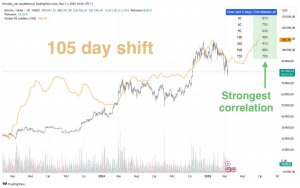Amazon’s 5-Day RTO Is a ’90s Solution to a ’20s Problem

Amazon CEO Andy Jassy has announced a significant shift in the company’s work policy, mandating a full five-day return to office (RTO) for corporate employees starting January 2, 2025.This decision marks a reversal from the hybrid work model Amazon had adopted post-pandemic, where employees were required to be in the office at least three days a week.
The CEO’s Perspective
In his memo, Jassy emphasized the benefits of in-person collaboration, citing improved learning, culture strengthening, and more effective brainstorming and invention. He believes that the advantages of being together in the office are “significant” and that the past 15 months of hybrid work have only reinforced this conviction. Jassy also announced plans to flatten the organizational structure by increasing the ratio of individual contributors to managers by at least 15% by the end of Q1 2025.
The Manager’s Dilemma
From a managerial standpoint, this decision presents both opportunities and challenges. On one hand, having all employees in the office could potentially streamline communication and decision-making processes. Managers may find it easier to oversee projects, provide mentorship, and maintain team cohesion.
However, this move also puts managers in a difficult position. They will need to navigate potential resistance from employees who have grown accustomed to remote work. Moreover, the mandate to increase the ratio of individual contributors to managers by 15% suggests that some middle management positions may be eliminated, creating uncertainty and potential morale issues.
The Employee’s Perspective
For many Amazon employees, this decision is likely to be met with significant resistance. The shift to a five-day in-office work week represents a major disruption to the work-life balance many have established over the past few years. It may necessitate relocations, changes in childcare arrangements, and a reassessment of personal and professional priorities.
Furthermore, this move goes against the preferences of many workers. Studies have shown that a majority of employees prefer hybrid or remote work arrangements. The mandate could lead to decreased job satisfaction, increased stress, and potentially, a wave of resignations as employees seek out companies offering more flexible work arrangements.
The Bigger Picture: Economic and Cultural Shifts
Amazon’s decision stands in stark contrast to the broader trends in the tech industry and the global workforce. The pandemic has accelerated a shift towards more flexible work arrangements, with many companies embracing hybrid or fully remote models. This move by Amazon seems to be swimming against the current of these larger economic and cultural shifts.
From an economic perspective, this decision could have far-reaching implications. It may impact local economies as employees are forced to return to office locations, affecting everything from real estate markets to local businesses. It could also influence Amazon’s ability to attract and retain top talent, particularly as other tech giants continue to offer more flexible work arrangements.
Moreover, this move raises questions about the nature of work in the 21st century. While Jassy argues that in-person collaboration is crucial for innovation and culture, the rise of productivity applications and AI has proved that remote work can foster creativity and productivity when implemented correctly. Amazon’s decision seems to prioritize traditional notions of workplace dynamics over the evolving understanding of how and where work can be effectively accomplished.
Conclusion
Amazon’s shift to a five-day RTO policy represents a significant gamble. While it may align with the company’s desire for a more cohesive culture and streamlined management structure, it risks alienating employees and potentially hampering the company’s ability to adapt to the changing nature of work. As the tech industry continues to evolve, only time will tell whether Amazon’s ’90s-style solution will effectively address the challenges of the 2020s workplace.







